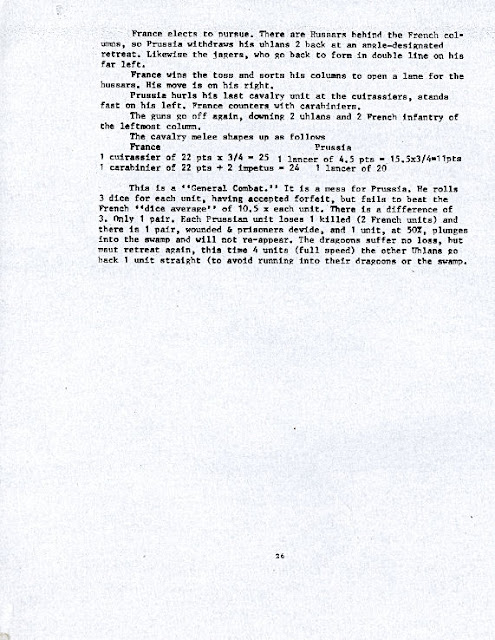
In a bit of a departure this week I received a complimentary copy of a new book by Jon Peterson, called Playing at the World a History of Simulating War, People and Fantastic Adventures, from Chess to Role Playing Games.
As I understand it the book seeks to trace the origins of Dungeons and Dragons through to modern role playing games, from earlier games from chess, through kriegspiel, and wargaming with model soldiers.
I think I will have received this copy because of the posts of early material from Wargamer’s Newsletter here by Gary Gygax and others, the Wargaming in the Twin Cities post, and some of the material on the debate on the place of fantasy in wargaming.
My own interests are UK based, historical miniatures gaming; the focus of this book is US based, board games, fantasy and role playing. I haven’t read it all but I have read Chapter Three, which offers a history of wargames, from 1780 and before, to the appearance of Dungeons and Dragons.
My reading is that the narrative drive of the book is towards the emergence of Dungeons and Dragons, and this means its emphasis and interpretation can seem a little odd to someone reading it from my perspective. It seems to me, for example, that it gives slightly more emphasis to the role of Tony Bath than others may, as the thesis is that Bath’s medieval rules from 1966 contributed to Gygax’s development of his Chainmail medieval rules, which in turn influenced the development of Dungeons and Dragons. There is also a considerable discussion of Bath’s Hyboria campaign. The author’s description of Tony Bath as among the most influential British miniature wargamers may read a little strangely to UK eyes – perhaps because he did not publish as widely as others; although Hyboria was certainly much admired.
This emphasis means, for example, that while Charlie Wesencraft is referred to three times, on each occasion it refers to his rules on mercenaries which influenced Gygax.
This isn’t a light read – it is written in the form of an academic work, with quite dense use of primary sources. It is particularly strong on collections of wargaming periodicals – more on the board gaming and fantasy side, but for example referring to several key articles in the BMSS’s Bulletin.
The general history of wargames it presents is interesting and contains a fair amount of material that is new to me. There is a very detailed account of the various versions of Kriegspiel and its antecedents, with interesting accounts of Robert Louis Stevenson and hG Wells. I was particularly pleased to see reference to Bob Bard's Making and Collecting Military Miniatures and a picture of rather better copy than the one I used of the Wargaming in the Twin Cities article from 1966 featuring Dave Arnesen and David Wesely.
If this all seems a little half hearted, it isn’t meant to be. The author’s interest in wargaming is substantially different to my own, but there is much interesting information here. some of which was entirely new to me. It isn’t an easy read along the lines of Achtung Schweihund! but if you are interested in the fantasy and role playing side of the hobby it may be just the thing for you.
The book is clearly the result of an immense amount of research and hard work. In the spirit of Blackadder III reading Dr Johnson's Dictionary,
I will only mention that I found it surprising given its interest in Kriegspiel and military board gaming that Guy Debord's Game of War makes no appearance. (I must admit I am relying on the index for this assertion as I have not read all 698 pages.
The book can be found on on Amazon UK here and you can use the Look Inside feature to see some of the content – if you think you may be interested in it I would suggest having a look at Chapter Three and seeing what you think.



































